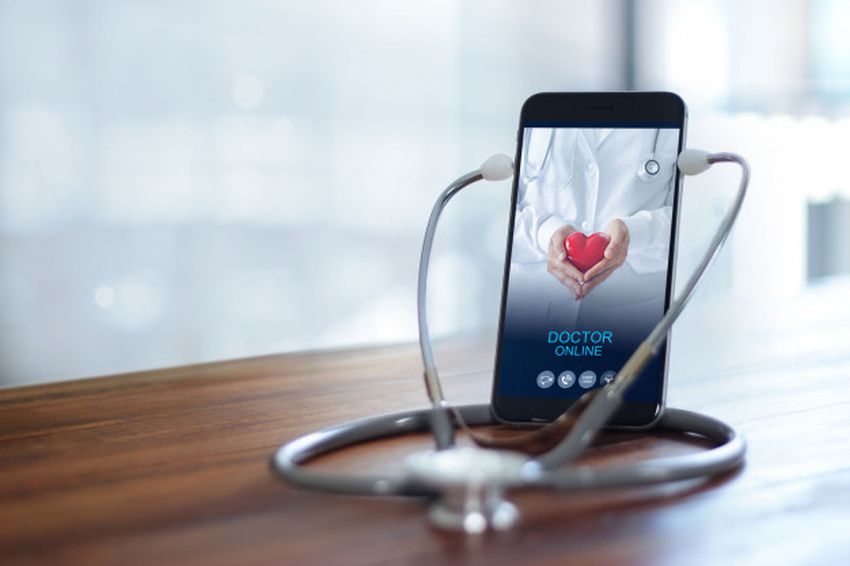In 2010, the federal government issued a mandate that required and incentivized healthcare providers to adopt electronic health record (EHR) platforms. This push aimed to achieve a number of goals, including modernizing healthcare systems and improving patient care by ensuring providers had complete records for each individual, no matter where they had been treated before.
A decade later, many issues with the adoption process remain, including critical concerns around interoperability, but it’s clear that EHR adoption has made a significant difference. Even a quick look at the healthcare landscape demonstrates just how many tools EHRs offer to healthcare providers and practices beyond basic recordkeeping and how they’re improving patient care, especially for vulnerable populations.

img source: freepik.com
Collaborative Management
While patient care may fall heavily on the shoulders of doctors and other professionals, such as nurse practitioners, none of that care happens without support from administrative staff. One of the major advantages of using EHR platforms, then, is that rather than transferring patient calls between countless phone lines or discovering that an insurance question has landed in a provider’s inbox, administrative staff and providers can share inboxes.
This kind of collaboration is key to reducing physician burnout and the amount of time they spend handling EHR messages and documentation, while also lightening the load for patients. Many patients, especially those with complex health needs, spend a great deal of their own time handling healthcare concerns, sending messages and seeking authorizations. The fewer hoops they have to jump through to reach the right point of contact, the better it is for everyone.
Optimized Exams And Interventions
Doctors are veritable libraries of information when it comes to human health, but it’s not possible for them to know every possible diagnosis or treatment, even within their specialties. After all, healthcare is a quickly moving field, and new products are being released all the time, while diagnoses are regularly refined and reorganized based on ICD-10 codes and other systems. That’s why even the best providers look to online content libraries, textbooks, and other resources when providing care – it’s how they ensure patients are receiving the best care, and EHRs can help.
While many EHRs are equipped to identify potential medication conflicts, for example, specialty EHRs offer providers more targeted supports that can be used to optimize treatment. For example, a specialty chiropractic EHR, such as the one from WonderDoc.com, can highlight adjustment techniques for different parts of the spine based on input from the patient examination. And, unlike provider-driven treatment, these recommendations can be continually updated based on the latest research and data and is easily integrated with other parts of the patient record.

img source: freepik.com
Facilitating Telemedicine
Telemedicine has played a vital role during the COVID-19 pandemic, allowing providers to deliver care without direct contact, but the quick shift to telehealth wouldn’t have been possible without the earlier adoption of EHR platforms. Not only did EHRs, which are typically integrated with the larger patient portal, make it easy to schedule these appointments and communicate regularly with patients, but many already had tele-visit tools built into the interface.
At such a high-stress moment as the peak of the COVID-19 pandemic, the last thing providers needed to add to their load was teaching patients how to use a new interface. But since patients didn’t have to use an outside platform to log on to their appointments, but could just receive care through an already familiar portal, EHRs easily eliminated a potential barrier to care.
Supporting Psychiatric Care
Psychiatric patients are one of the more vulnerable subsets of patients, especially those who fall under the heading of severe mental illness (SMI). Many SMI patients can’t advocate effectively for each other and even patients who typically have well-managed conditions may struggle with self-advocacy and communication when experiencing a major psychiatric crisis. As a result, they may not be able to effectively connect different members of their treatment team or convey key information about past treatment. So, how can EHRs help?
Since the widespread adoption of EHRs, many psychiatric hospitals have been able to significantly improve the patient experience. This is important because concerns around psychiatric record privacy meant that many psychiatric facilities were left behind when other parts of the healthcare system were adopting EHRs. This research into patient satisfaction scores, however, demonstrate that these facilities fare better with EHRs than without and that the use of EHR platforms won’t harm their reputation among patients, but may actually improve it.

img source: freepik.com
Filling In Care Gaps
Another vulnerable patient group that is persistently at risk of receiving improper or insensitive care, and who may experience serious gap in healthcare access, are transgender individuals. These gaps emerge for a number of reasons, including concerns about discrimination, which may lead patients to forgo care, as well as poverty, which may make healthcare inaccessible. However, with system modernization and a larger population of trans-competent providers, EHRs have emerged as a potential tool for bridging the data gap.
With access to more complete and representative data on transgender patients, doctors can ensure that these patients are receiving appropriate treatment; for example, a transgender man – someone assigned female at birth – still needs to be screened for cervical cancer, but such care may not be automatically recommended by the EHR platform unless it is designed to account for transgender patients’ needs. Such adaptations are both obvious and life-changing and have far-reaching implications for patients who are historically marginalized by the healthcare system.
EHRs: Changing Healthcare For The Better
Despite their popular perception as little more than records management platforms, EHRs have entirely transformed how healthcare is delivered, managed, and understood. From researchers trying to better understand patient needs or gathering data on prescription medications to individual providers determined to offer patients the most appropriate interventions for their problems, EHRs are at the ready.
As providers continue to reckon with the practical value of EHRs, it’s important to keep in mind that there’s always room for improvement. EHRs should be designed in conjunction with providers and with interoperability in mind. This is where digital health and the daily realities of provider have to work together. Having cleared the first barrier – driving provider adoption – it’s time to make EHRs everything doctors and patients hope they can be.



